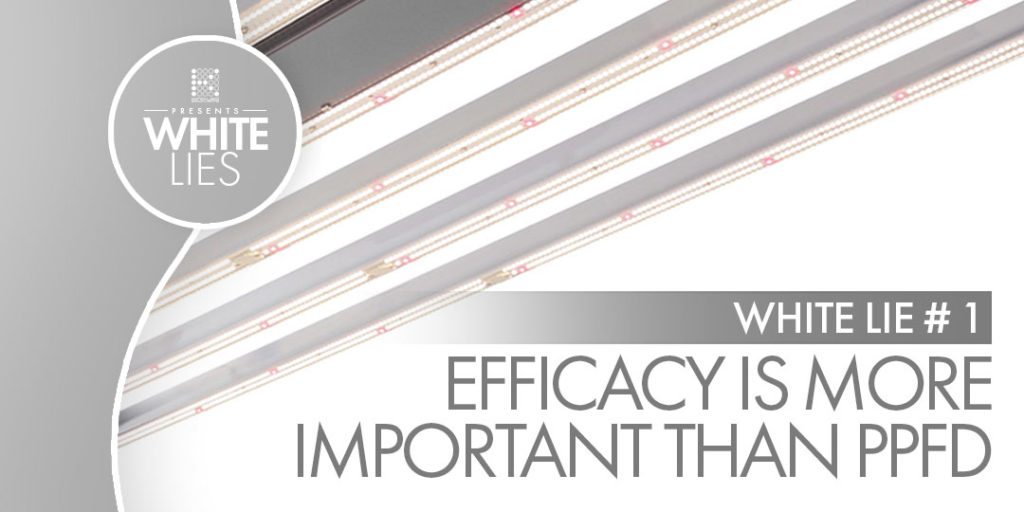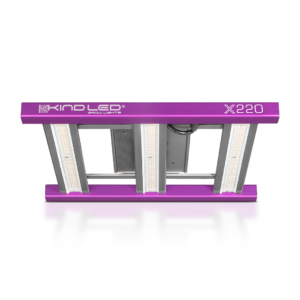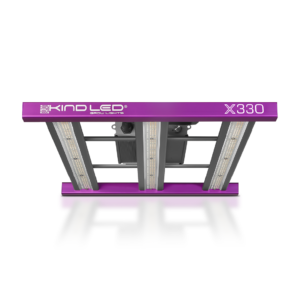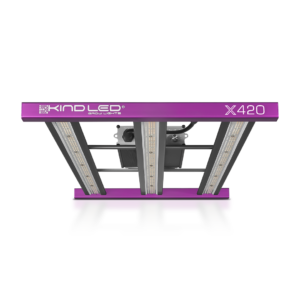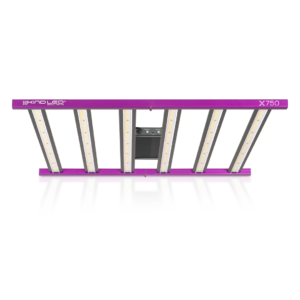Welcome to a new blog series from Grow Strong Industries where we address some of the misinformation currently being spread by the white light LED manufacturers so prolific in the horticultural lighting industry.
White Lie #1: Efficacy is more important than PPFD
Recently, there has been a shift in the industry when it comes to what LED grow light manufacturers consider the most important feature of their fixtures. Whereas the spec most consumers were most interested in used to be PPFD, nowadays manufacturers are advertising their efficacy figures.
Efficacy is a measurement of how effective a grow light is at converting electrical energy into photosynthetically active radiation. This is calculated by taking the PPF value and dividing it by the measurement of wattage (Joules per second). Therefore, efficacy measures exactly how much usable light a fixture produces every second per watt used. (µmol/J)
A white-light LED with a great efficacy value can flood a plant with a ton of photons, and the plant will do well enough, however, there will be a considerable amount of energy wasted in order to produce that growth. A plant can only absorb so many photons, and they are not absorbed in equal amounts. The vast majority of green and yellow photons will wind up wasted as heat, as plants can only absorb those wavelengths in limited quantities. A fixture with a lower efficacy value and an optimized spectrum with the ideal amount of green and yellow light can provide superior results with considerably less wasted energy.
The fact that a considerable amount of the light emitted from white light LED fixtures is wasted calls the importance of efficacy values into question. PPF is measured by a machine called an Integrating Sphere, which measures all of the photos between 400-700nm emitted by a fixture regardless of how much of that light reaches the plants, so it’s inadvisable to put too much stock into a high efficacy value. Efficacy alone means little without context. When you consider that 50% or more of the green and yellow light from a white-light LED fixture is wasted, and that green and yellow light make up a sizable percentage of a white light LED’s spectrum, a high efficacy value suddenly seems misleading. You would be better served by a fixture with a targeted spectrum that may have a lower efficacy value.
White light LEDs are already used in every industry imaginable for human visibility, which speaks to the viability of the technology over traditional lighting methods, but unfortunately, an efficient diode for human visibility is quite the opposite for your plants, irrefutably inefficient, regardless of the specs of the diode. The research and development into white light diodes is much further along—they are readily produced by many large manufacturers, and because of this availability are considerably less expensive than producing diodes with a specially targeted wavelength. This means bigger profits for the companies using these diodes. Often, the efficacy of these diodes is better on paper than the alternatives, which gives the companies the ability to market these specs, despite the fact that efficacy alone does not make a grow light effective. Ultimately, manufacturing white light LEDs is a business decision that several companies have made. Marketing has spun a company cost-saving measure for themselves into a selling feature and in doing so has manipulated a large percentage of growers into believing that it’s the best way to grow.
